Many balcony owners — especially those with hot south-facing balconies — complain about too much heat. The plants wither, it’s too hot to sit outside and they are also infested with aphids. Creating a balcony with low-maintenance, hardy, native wildflowers is a wonderful alternative. They create their own microclimate and the beautiful wildflowers can be enjoyed at eye level. What’s more, many wild bees and butterflies will be attracted to the area, which always brings pleasure. Create a low-maintenance, beautifully flowering, bee-friendly balcony with mainly native wildflowers.
My biotope on the balcony with mainly native wildflowers: Stefanie Binder from Hamburg on 3 m²
I would like to present such a balcony: Stefanie Binder from Hamburg City — 3 m² south-facing balcony: beautiful, rich in flowers, varied, easy to care for with its own pleasant microclimate. She sits among her flowers in midsummer and enjoys them.
With wild plants, such observations already work in the first year. Sowing and planting in April, a sea of flowers from June, the visitors are coming.
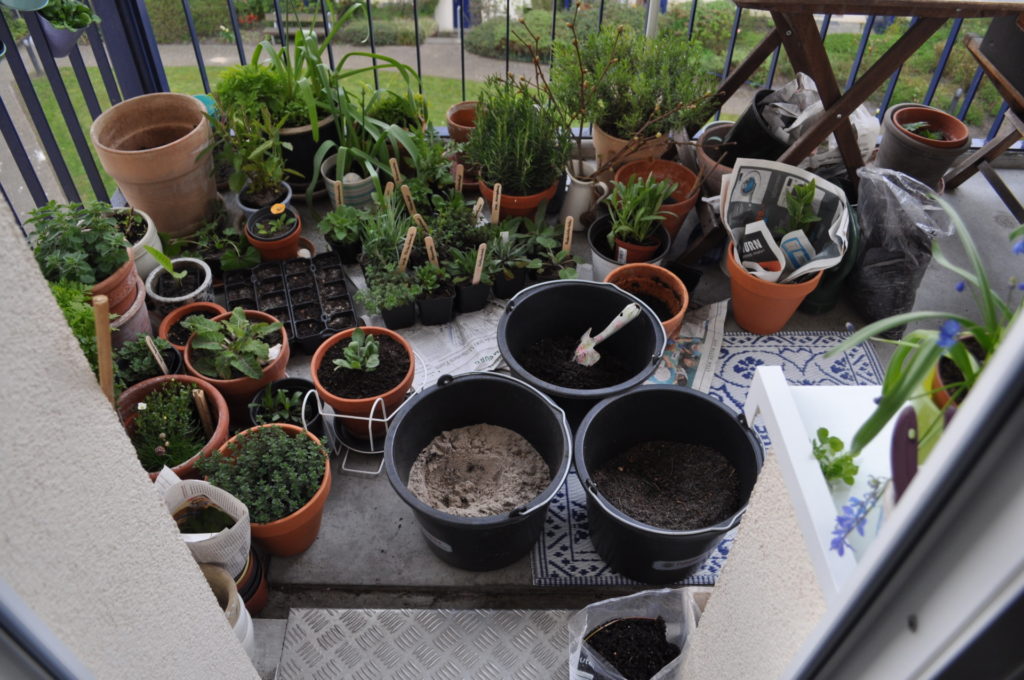
Start in April
With wild plants, great observations can be made in the very first year. Sowing and planting in April, a sea of flowers from June, the visitors come.

Major planting campaign at the beginning of May
May 8: Seedlings are planted in larger pots. Each small perennial and each seedling is given its individually desired mixture of compost, garden soil and sand.
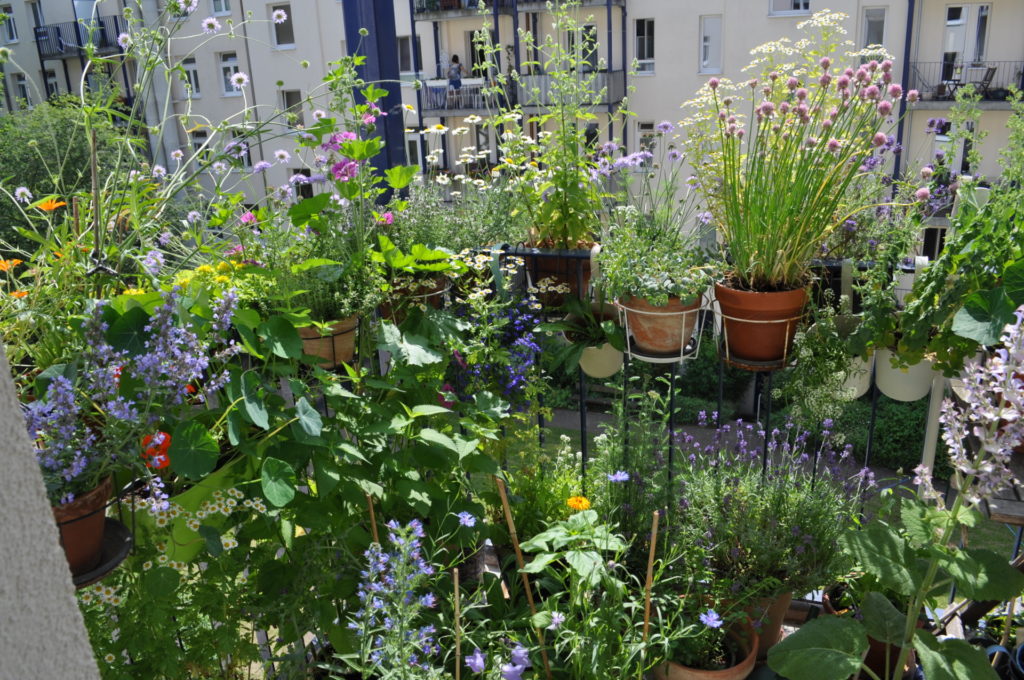
Wild plants are robust, long-lived and Easy to clean
On June 17, Stefanie now has 78 tubs, pots and boxes filled with mostly native plants that require surprisingly little care and watering. However, they bloom persistently and magically attract lots of insect visitors.
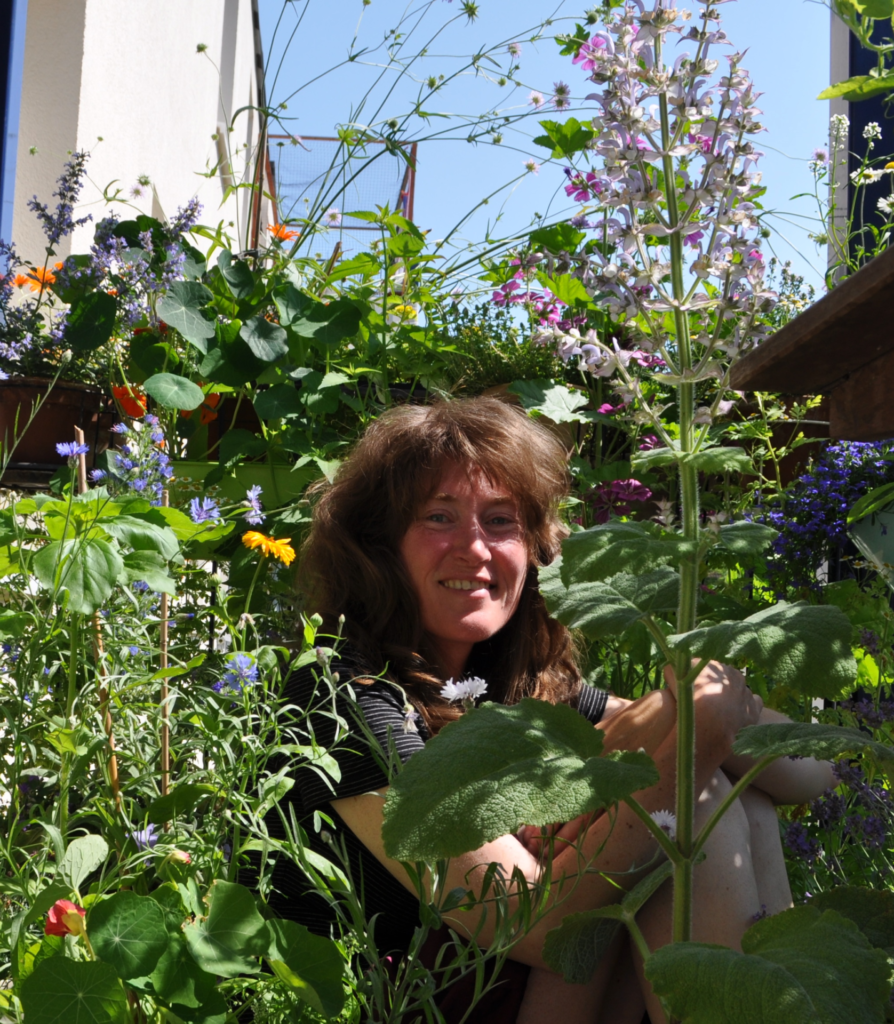
In the middle of it all on the easy-care, beautifully flowering, bee-friendly balcony — the insect watcher and keeper
She likes to sit in her balcony meadow, sheltered from the neighbors’ eyes, to listen to the buzzing of the bees and watch the many insect visitors! It gives her an inner satisfaction.
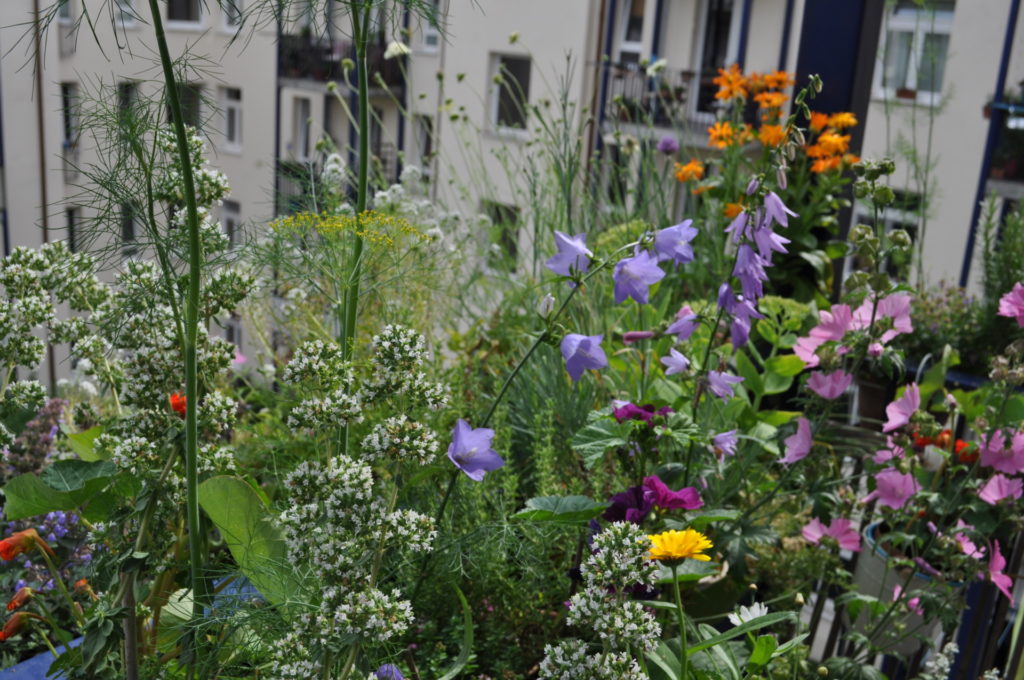
Midsummer on the balcony — A flower dream
July 12. They bloom persistently and magically attract lots of insect visitors. By hanging boxes and pots on both sides of the railing, she has increased the flowering area.
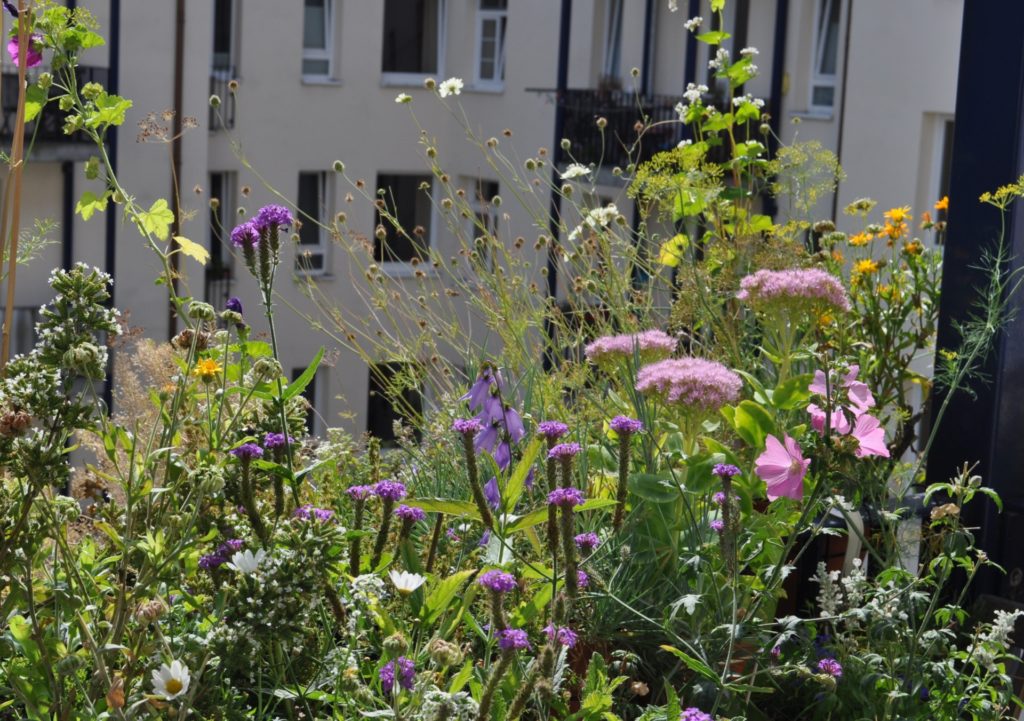
It’s all about choosing the right plants
September 11. Late summer on the balcony. There’s still plenty on offer for insects: thyme, mallow, dyer’s chamomile, stonecrop, agastache. Plenty for Stefanie to observe.
Your favorite plants for an easy-care, beautifully flowering, bee-friendly balcony
Stefanie Binder from Hamburg used to use flowers from the DIY store. She made the Experience: ENative wildflowers are easier to care for, less susceptible to pests, more persistent, frost-hardy. They don’t bloom ostentatiously, they bloom delicately and have a charm all of their own. Stefanie also demonstrates how quickly and beautifully a lot can be done for biodiversity if done well. She enjoys sitting in her sea of flowers and watching the insects at work or at rest.
For my Book she told me your Top ten favorites, extended to Top 12.
1. MallowsWild mallow, rose mallow and Mauritanian mallow
2. Scabiosa: Pigeon Scabiosa, Yellow Scabiosa
3. BluebellsCushion bellflower, field bellflower, peach-leaved and round-leaved bellflower, rapunzel bellflower
4. Fat hensyellow ground cover stonecrop, one low and one tall stonecrop
5. ThymeThyme, field thyme and lemon thyme
6. Hyssop
7. Catnip: White and purple catnip
8. Scented nettle
9. MintsPeppermint, mountain mint and strawberry mint
10. Feverfew
11. Ox tongue
12. Viper’s bugloss
Germany is humming!
Stefanie is the winner of the planting competition Germany is buzzing! We do something for bees in the balconies category.
Take a look at the delightful pictures of Steffi’s balcony on Germany is buzzing! We do something for bees to:
Part 1 shows the development and design modules. You can see before/after pictures and structural elements. Here you can get design ideas and a list of plants. Part 2 shows the diversity and beauty of your plant and its wild bee visitors.
Anyone who redesigns their balcony can treat themselves to the pleasure of Nationwide planting competition 2020 We’re doing something for bees! to take part. A high-quality award ceremony (due to Corona 2020 online, but will still be super nice again) and great prizes will be rewarded.

A valuable component of the 4th Online Organic Balcony Congress are interviews with balcony starters of wild plant balconies. The interviews with urban balcony gardeners Marie Fey show how much balconies can do for biodiversity and self-sufficiency, Lilli Erasin and Atessa Bienhüls from the Hortus Sursum. Pictures of their balconies embellish my book, where you can read more detailed information on designing insect-friendly and bird-friendly balconies. With such balconies, you can experience great nature observations without having to travel. You can watch all 27 expert interviews and 9 live Q&A sessions on balcony gardening here afterwards. The congress package can be purchased for a small price.
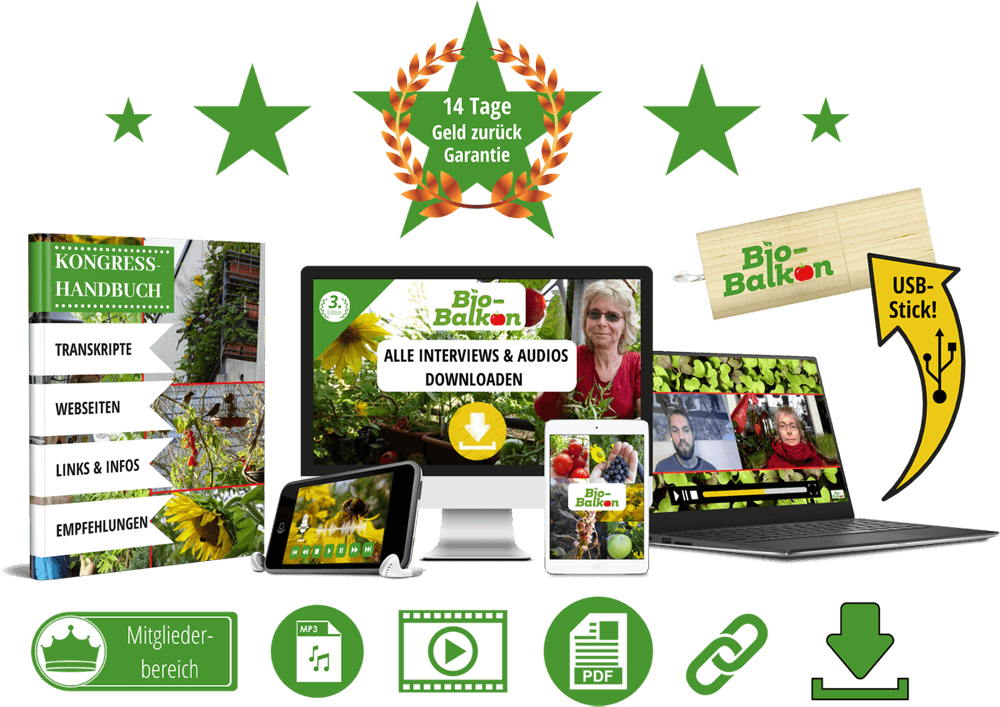
Wild plant balconies are an alternative for polluted sites!
These beautiful wildflower balconies are an alternative for balconies on busy roads where people are understandably reluctant to harvest. If you feel uneasy about pollution, I have some expert information for you. You can find an interview on pollutants in inner-city gardening from the 3rd Online Organic Balcony Congress here.

Thank you dear Stefanie for your great inspiration and sharing your experiences on your easy-care, beautifully flowering bee-friendly balcony!
Steffie shares further experiences by e‑mail: wildbienenreich@web.de.

Stefanie has been working for the Hamburg project Moin Stadtnatur since 2023. She provides us with a guide “Natural gardening on balconies and terraces” available. Thank you Stefanie — very, very helpful.

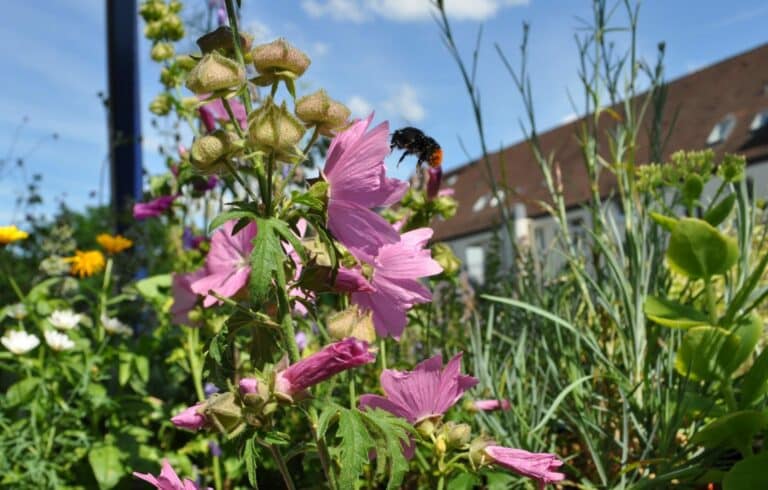


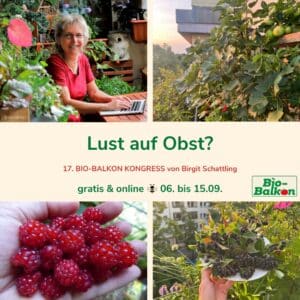

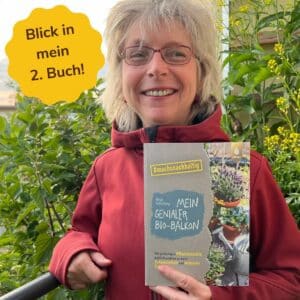
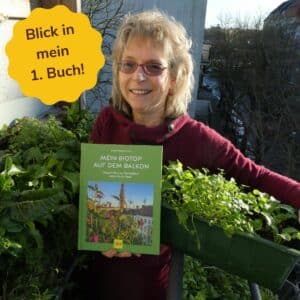

2 Responses
Hello Birgit, thank you for your kind words about my application, they did me good. I now also have native plants, lettuce and strawberries on our balcony — encouraged by your suggestions! As I am still at the beginning, I have read about organic fertilization, what do you recommend? I only need small amounts, what can I make myself (without it being very smelly)?
Have a successful week!
Farewell!
Kornelia West
Dear Kornelia,
You want to make your own organic fertilizer. I’m a big fan of worm composting. In other words, composting your own organic waste in a worm bin. I harvest about 5 liters of the finest worm compost in my worm bin every 3 months. I use it to fertilize my plants and get good harvests. As the worm humus contains the valuable microorganisms, my substrate in the planters is alive, just like outside in the natural soil. These worm boxes don’t smell, just a slight smell of forest soil, which is very pleasant. I find this cycle in the home — my worm bin is even in the kitchen — very satisfying and sustainable. This worm composting https://bio-balkon.de/empfehlungen/wurmkompostierung/ makes the most sense to me.
A second option is to make slurry from herbs https://bio-balkon.de/wie-staerke-ich-natuerlich-meine-pflanzen-gegen-schaedlinge‑2/. My favorite combination is nettles, tansy and horsetail. Fermentation takes place, odors occur, you don’t want that. Rock flour helps, but it still smells bad. You can make cold water extracts, teas and broths from herbs, which also have a fertilizing effect. The traditional and tried and tested method is cauterization.
You can mix a smoothie from these and other herbs and fertilize your plants with the plant mash.
Kind regards
Birgit